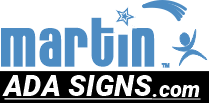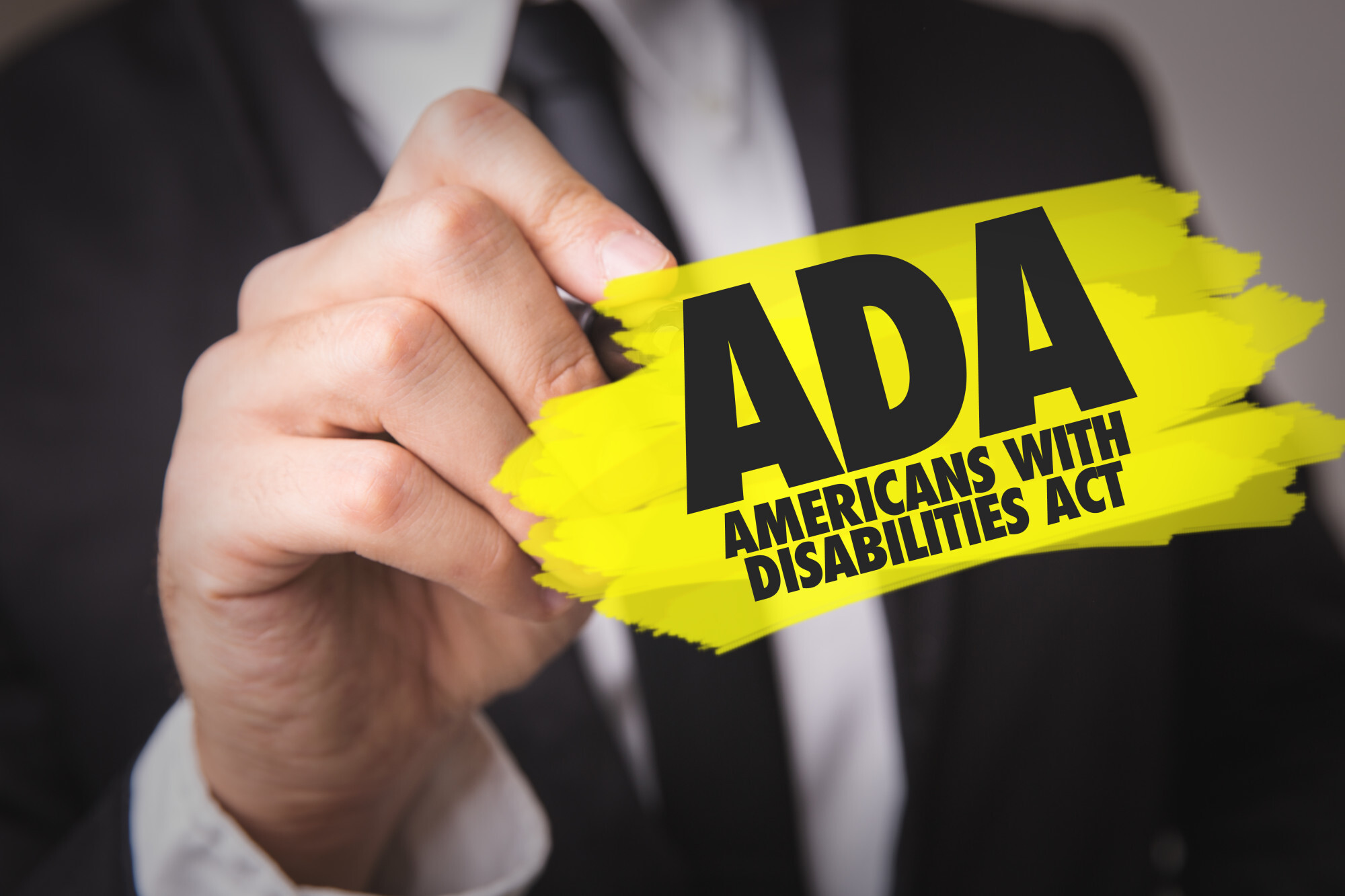Did you know that around 54 million Americans have disabilities? It’s hard to believe, but there was a time when public spaces weren’t accessible for people with disabilities.
Before the Americans with Disabilities sign was created, people with disabilities were often ignored or even discriminated against. They were often left out of important aspects of life, like education and employment.
The Americans with Disabilities sign changed all that. Keep reading to learn all about the history of the Americans with disabilities sign and how it all started.
What Is ADA Signage?
ADA signage is a special type of sign created to make it easier for those with disabilities to access and utilize public and commercial places. A necessary component in the enforcement of the Americans with Disabilities Act of 1990, ADA signs are familiar to everyone and can be found throughout all types of public spaces.
Characterized by their Braille or raised lettering, they are uniquely designed to alert individuals with visual impairments or physical limitations of any potential hazards in their environment as well as provide guidance on how to get around safely in these public areas.
With the implementation of this type of signage, the rights of those with disabilities have been protected, thus giving them greater freedom and accessibility in all aspects.
The History of ADA Signage
The Americans With Disabilities Act Accessibility Guidelines (ADAAG) was established in 1991 as the official document for determining what types of signage are considered to be ADA-compliant. The guidelines contain specific requirements about type size, letter spacing, line width, and other factors that must be taken into consideration when designing ADA-compliant signage.
Since the guidelines were established, there have been several updates to ensure that ADA-compliant signage is up-to-date with current accessibility needs. For example, in 2016 the ADAAG was updated to include new requirements for digital displays and tactile characters for signs.
Today, ADA-compliant signage is used in a variety of public and commercial spaces to ensure that everyone can access important information. This includes schools, businesses, hospitals, and other places of public accommodation. By making sure businesses comply with ADA regulations, we can ensure that all individuals can participate fully in society regardless of their physical or mental disabilities.
How Do ADA Standards Apply to Signage?
The ADA Accessibility Guidelines recognize that people with disabilities need to be able to read and understand signs to gain access to public places. The ADA requires businesses, schools, and other public spaces to provide signage that meets certain standards of clarity and accessibility.
ADA-compliant signage must have:
- Raised characters and tactile symbols for the visually impaired
- Contrasting colors to ensure readability
- A large typeface for easy identification from a distance for people with low vision
- Braille characters and letter spacing requirements to make the sign easier to read
By ensuring that all public spaces are equipped with ADA-compliant signage, we can create an environment that is accessible and welcoming to everyone. This allows individuals with physical or mental disabilities to access public spaces without difficulty.
Examples of Americans with Disabilities Sign
ADA-compliant room signage can be found in a variety of places. It is typically used to identify restrooms, elevators, stairwells, and other areas with accessibility requirements. Here are some examples of ADA-compliant room signs:
Identification
Accurately identifying a room and navigating a space can be challenging for those with limited vision, so it’s crucial to make sure all the signs meet accessibility guidelines. All the identification characters should be printed in large, raised, and tactile lettering so they can be easily distinguished from other signs.
It’s also essential that users of different abilities feel at ease navigating any room thanks to well-defined identifiers. Properly identifying each room can become an even bigger challenge when individuals have difficulty seeing or have impaired vision entirely.
Fortunately, adhering to these guidelines helps create an environment where everyone can navigate freely and with confidence.
Warning
Keeping the public safe should be the number one priority of any business. That is why warning signs are such an important part of everyday life. Warning signs not only inform people of potential dangers, but they also serve as a reminder that precautions must be taken when approaching certain areas or activities.
From cautioning drivers to slow down in construction zones to reminding people to wash their hands before entering a restaurant, warning signs come in various shapes and sizes and can alert us to all kinds of risks.
Although it might seem like a small step, investing in appropriate warning signage is essential for keeping visitors safe and ensuring that everyone can enjoy their experience worry-free.
Directions
Accessible directions are essential for anyone seeking to find their way, regardless of disabilities or impairments. However, many places lack the adequate signage needed to provide these clear and accurate directions. ADA-compliant directional signage should be used every time a person needs guidance in an unfamiliar area or room.
Not only must it include raised characters and tactical symbols, but it should also feature letter sizes large enough that they can easily be read from a distance.
By ensuring that this type of direction is readily available, society can allow everyone to comfortably explore new locations with the assurance that they can easily get back on the right path if needed.
Informational
Informational signs are a key part of the accessibility landscape. By providing different forms of visual and tactile input, informational signs can help people of varying abilities understand important information about the space they’re occupying.
Whether it’s a contact number for assistance or accessible features in said place, these signs allow for easier access and understanding for all who see them. Informational signs must be placed in areas that are visible so anyone can understand and use them.
These easily accessible signs will help improve accessibility and make sure everyone has an easier time navigating locations.
Overhead
Overhead signs provide a way to navigate large, crowded public spaces with ease. They are especially useful for visually impaired people, as they have raised characters and tactile symbols that can be read without having to look up at the sign.
Making signs from heavy materials makes them last a long time, even in busy places. They can help people find their way in airports, train stations, and stores.
Open houses also help make the space look the same throughout. This makes it easier for people to see important messages.
Regulatory
Regulatory signs are put up to help keep people safe. They tell people what they can and cannot do in an area. Some common regulatory signs are fire exit signs, restricted area signs, and no smoking signs.
These signs must meet ADA regulations for accessibility and should be placed in high-traffic areas that can easily be seen by all.
These signs do two things. They give people information, and they remind people that there are rules that everyone must follow to stay safe.
Benefits of ADA Signage
Now that you know more about ADA-compliant signage, it’s important to understand the benefits of using this type of sign. Let’s look at them now in more detail:
Accessibility
Accessibility is a key part of building an inclusive world. In addition to ensuring that people can physically access buildings, it is also important that everyone can access information in public spaces regardless of their physical or mental status.
To this end, ADA signage plays an essential role. Such signage goes beyond the conventional signs used in public places such as restaurants, libraries, and schools to provide visually impaired persons with specific information regarding services and facilities within these spaces.
This not only helps those who are blind or vision-impaired navigate more easily but also allows them to enjoy the same experiences and freedoms as any other person. Without ADA signage, many would not able to access the same information that others do.
With its aid, gone are the days of barriers; replaced instead with a more level landscape for all members of society to learn and grow together in our ever-evolving world.
Safety
ADA signs help keep people safe. You can see them almost everywhere. They show people where it is safe to walk and where the re might be a danger.
There are different signs for different things. Some signs tell people there is a wet floor. Some signs tell people what to do if there is a fire. The ADA signs help people in case something bad happens. They also help people who have trouble walking to know where to go.
These signs show people where it is safe to go. They help people who have disabilities stay safe too. The signs help people find a way out of places that could be dangerous.
Clarity
It is very important to be clear when you are talking to people. Some people cannot see very well. So there are special signs that have big letters and symbols that people can touch. These signs help people who cannot see understand what the sign says.
An ADA personalized sign is designed to help people who have disabilities and also make it safer for everyone. The signs have pictures that tell people what to do or braille for the visually impaired.
If people understand what you are saying, they can make better decisions. This helps everyone be more equal and get along better.
Compliance
Compliance is a critical topic for any public space or business that wishes to stay above board with current regulations. ADA-compliant signage can be an excellent way for companies and organizations to ensure they are meeting the requirements of disability law, providing demarcated access routes as well as directions, safety information, and parking guidelines.
Not only does compliant signage act as a necessary safeguard, but it also sends a positive and welcoming message to all customers who visit a space. As such, ensuring your signage and other features are compliant with the current law isn’t just mandatory – it’s just good business sense.
Welcoming
An engraved sign should provide important information for people who have a disability. This lets them do things safely that they couldn’t do before. These signs help disabled people, but they also remind everyone that everyone is welcome, no matter what their abilities are.
When we have ADA-compliant signs in places like hospitals, office buildings, and stores, it shows that we value everyone. These signs help people to understand and appreciate each other, even if they are different.
Inclusion through accessibility is an important step toward creating a more welcoming society for all.
Cost-Effective
One of the most attractive aspects of a custom ADA sign is its cost-effectiveness. Not only does it provide a sense of accessibility and inclusion, but making sure your signage is up to code can also save you money in the long run.
The cost of installing ADA-compliant signs generally ranges from minimal to moderately priced, with most businesses finding the upfront cost more than worth it in the long run.
Get the ADA Signs You Need to Be Compliant
ADA signs matter because they ensure that people with disabilities can navigate areas safely and effectively. By clearly labeling exits, restrooms, and other important areas, ADA signs help to create a more inclusive and welcoming environment for everyone.
When choosing an Americans with disabilities sign for your workplace, be sure to consult with an expert to ensure that you are choosing the right sign for your needs.
Are you ready to find the right signs for your workplace? Get a custom quote for the signs you need from a manufacturer that understands the requirements.

